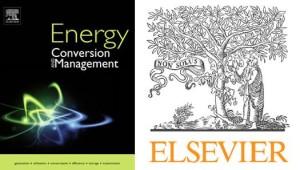 Analisi sperimentale sulla detonazione in un motore ad accensione comandata
Analisi sperimentale sulla detonazione in un motore ad accensione comandata
KISTLER Engine Symposium, Maranello
14 giugno 2013
Rilievo dell’intensità di detonazione attraverso un metodo sperimentale basato sull’analisi del segnale di pressione.
Acquisizione del segnale di pressione in camera di combustione;
Analisi dei dati attraverso un software scritto in Labview.
 Analisi Sperimentale delle Prestazioni di un Motore ad Accensione Comandata Alimentato con Miscele Benzina-Butanolo
Analisi Sperimentale delle Prestazioni di un Motore ad Accensione Comandata Alimentato con Miscele Benzina-Butanolo
III Congresso Nazionale del Coordinamento della Meccanica Italiana
1 luglio 2014
In questo lavoro si sono analizzate le prestazioni di un motore ad accensione comandata, di piccola cilindrata, turbo-sovralimentato, alimentato con miscele di benzina senza piombo e normal-butanolo al 20% e al 40% (in massa) di quest'ultimo.
In questa prima fase della ricerca, le prove sperimentali hanno riguardato prevalentemente punti di funzionamento a regimi di rotazione e carichi medio-bassi.
Le prime indagini effettuate hanno avuto lo scopo di determinare le variazioni esistenti tra i diversi tipi di alimentazione in termini di potenza, rendimento, durata angolare della combustione ed angolo di anticipo all'accensione ottimale ai fini del minimo consumo specifico di combustibile. Inizialmente, si è posta particolare attenzione all'utilizzo dell'alimentazione stechiometrica per riprodurre le condizioni di funzionamento più prossime a quelle del motore di serie. Successivamente, invece, si sono imposti diversi valori al rapporto di miscela per confrontare gli andamenti delle emissioni inquinanti (CO, HC ed NOx) e climalteranti (CO2) in funzione dell'eccesso d'aria, al variare del combustibile impiegato nell’alimentazione del motore. Il controllo dell’eccesso d'aria è garantito dalla sonda lambda a banda larga (sonda UEGO) montata sul condotto di scarico del motore.
 Numerical and experimental characterization of knock occurrence in a turbo-charged spark-ignition engine
Numerical and experimental characterization of knock occurrence in a turbo-charged spark-ignition engine
Energy Conversion and Management
E. Galloni, G. Fontana, S. Staccone
19 luglio 2014
In this paper, knock intensity is deeply studied through experimental tests carried out on a turbo-charged spark-ignition engine. The experimental methodology is based on the analysis of the pressure signals detected within the engine combustion chamber.
In order to evaluate knock intensity, fast Fourier transform (FFT) and bandpass filtering techniques have been used to process the cylinder pressure values acquired in five hundred consecutive cycles.
Resonance frequencies have been found at about 8.0 kHz, 13.5 kHz and 18.5 kHz.
The maximum amplitude of pressure oscillations (MAPO) has been calculated for every engine cycle. In order to discriminate between knocking cycles and free knock cycles, MAPO values are compared to threshold values. These values have been determined following a statistical approach described in the paper. An index of knock intensity, that takes into account both the extent of knocking events and the cycleto-cycle variation has been introduced. Thus, at different engine operating points, the knock limited spark advance can be found.
At the end, a numerical analysis of the combustion process has been carried out in order to find a relationship between the knock occurrence and the combustion chamber geometry. A 3-D computational model, based on AVL FIRE v2011 code, has been utilized. The 3-D model is able to predict the auto-ignition zones. By matching these zones and the map of mixture distribution, it is possible to predict the location of the most dangerous areas within the combustion chamber. Furthermore, comparisons of calculated and measured data provide sound information about the importance of pressure transducer position in terms of knock intensity quantifying.
Energy Conversion and Management
E. Galloni, G. Fontana, S. Staccone
15 Agosto 2015
ORC (organic Rankine cycles) represent a sound solution for the exploitation of thermal energy available at low temperature.
The prototype of a small ORC power plant has been realized at the Energy Systems Laboratory of Cassino University. In this paper, the plant design, the experimental methodology and the thermodynamic analysis of the work cycle have been illustrated. The aim of the work is to assess the feasibility of small-scale ORC plants.
The basic idea is to analyze the performance of a small ORC plant able to exploit low-temperature heat sources.
Thus, a simple organic Rankine cycle has been analyzed and R245fa as working fluid has been selected. Due to the small working fluid flow rates, a volumetric machine, in particular a scroll expander, has been chosen for mechanical power generation.
The hot source temperature has been varied in the range 75–95 °C and the cold sink temperature ranged between 20 °C and 33 °C. The R245fa vapor maximum pressure varied from 6 up to 10 bar. In this operating range, the best obtained results were: electric power equal to 1.2 kW, specific work about 20 kJ/kg and cycle efficiency slightly greater than 9 percent.



Un commento Aggiungi il tuo